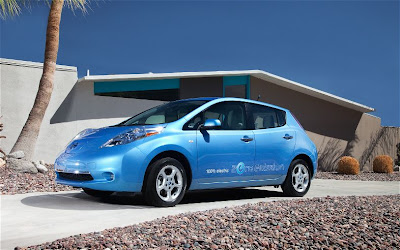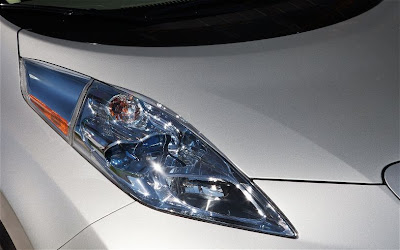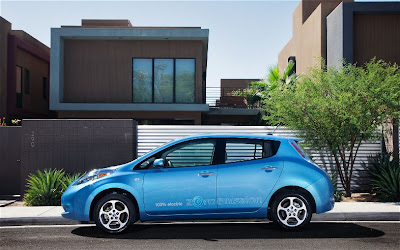Information Specification Image Review 2012 Mitsubishi Outlander Sport ES
At first glance, the naming of the 2012 Mitsubishi Outlander Sport seems to make sense. This compact SUV looks the part of an automotive athlete with its aggressive, Lancer Evolution-inspired front-end styling and semi-crouching stance. But sadly, there's really not enough under the buff body to justify the "Sport" portion of this model's moniker.
On paper the Outlander Sport looks promising, as it is loosely based on the Mitsubishi Outlander, a crossover SUV we've praised in the past for its agile handling. Baby brother Sport is 14 inches shorter, 2 inches lower and as much as 700 pounds lighter, all favorable factors that should add up to increased agility and performance. But in the real world we've discovered that these would-be advantages yield nothing particularly beneficial.
The Sport's lighter weight would be an advantage if it could be had with the bigger Outlander's more powerful engine choices, but the Sport only comes with the 148-horsepower inline-4 borrowed from the Lancer sedan. And when it's coupled to the CVT, the end result is lackluster acceleration. The Sport's handling will likely be fine for most folks, but those looking for performance that matches the Sport's name and looks will wish for less body roll and more grip during spirited cornering.
If you forget about the "Sport" part, this Mitsubishi is pretty agreeable. It provides a smooth, quiet freeway ride and comes with a fair number of features for relatively short money. But pitted against other compact crossovers, the Outlander Sport doesn't really make the cut. Other similarly sized runabouts, such as the Kia Sportage, Mini Cooper Countryman and Nissan Juke are more enjoyable to drive thanks to superior performance and handling. And if you'll be frequently hauling luggage or cargo, more mainstream models like the Chevrolet Equinox, Honda CR-V and even the regular Outlander are going to be more practical and useful overall.
The Outlander Sport is offered in ES or SE trims with front-wheel drive or four-wheel drive (SE only) configurations. The standard engine is a 148-hp 2.0-liter four-cylinder engine paired with either a 5-speed manual or a continuously variable transmission (CVT). Standard features on the Outlander Sport include seven-airbags, vehicle stability control, anti-lock brakes with electronic brake-force distribution, brake assist, hill start assist, heated mirrors, body-colored door handles, LED tail lamps, traction control, and a tire-pressure monitor. A chrome tailpipe finisher, Xenon headlights, illuminated vanity mirrors, heated front seats, automatic climate control and passive entry make the SE trim unique.
Despite its name, the 2012 Mitsubishi Outlander Sport offers little in the way of sportiness. Acceleration is passable, but often you'll find yourself wishing for more power when entering highways and passing. Handling is similarly disappointing for driving enthusiasts, with noticeable body roll that does little to instill driver confidence or fun. To its credit, the Sport does have a smooth and quiet ride, making it an acceptable companion on long road trips.
source:edmunds.com,autos.aol.com
At first glance, the naming of the 2012 Mitsubishi Outlander Sport seems to make sense. This compact SUV looks the part of an automotive athlete with its aggressive, Lancer Evolution-inspired front-end styling and semi-crouching stance. But sadly, there's really not enough under the buff body to justify the "Sport" portion of this model's moniker.
On paper the Outlander Sport looks promising, as it is loosely based on the Mitsubishi Outlander, a crossover SUV we've praised in the past for its agile handling. Baby brother Sport is 14 inches shorter, 2 inches lower and as much as 700 pounds lighter, all favorable factors that should add up to increased agility and performance. But in the real world we've discovered that these would-be advantages yield nothing particularly beneficial.
The Sport's lighter weight would be an advantage if it could be had with the bigger Outlander's more powerful engine choices, but the Sport only comes with the 148-horsepower inline-4 borrowed from the Lancer sedan. And when it's coupled to the CVT, the end result is lackluster acceleration. The Sport's handling will likely be fine for most folks, but those looking for performance that matches the Sport's name and looks will wish for less body roll and more grip during spirited cornering.
If you forget about the "Sport" part, this Mitsubishi is pretty agreeable. It provides a smooth, quiet freeway ride and comes with a fair number of features for relatively short money. But pitted against other compact crossovers, the Outlander Sport doesn't really make the cut. Other similarly sized runabouts, such as the Kia Sportage, Mini Cooper Countryman and Nissan Juke are more enjoyable to drive thanks to superior performance and handling. And if you'll be frequently hauling luggage or cargo, more mainstream models like the Chevrolet Equinox, Honda CR-V and even the regular Outlander are going to be more practical and useful overall.
The Outlander Sport is offered in ES or SE trims with front-wheel drive or four-wheel drive (SE only) configurations. The standard engine is a 148-hp 2.0-liter four-cylinder engine paired with either a 5-speed manual or a continuously variable transmission (CVT). Standard features on the Outlander Sport include seven-airbags, vehicle stability control, anti-lock brakes with electronic brake-force distribution, brake assist, hill start assist, heated mirrors, body-colored door handles, LED tail lamps, traction control, and a tire-pressure monitor. A chrome tailpipe finisher, Xenon headlights, illuminated vanity mirrors, heated front seats, automatic climate control and passive entry make the SE trim unique.
Despite its name, the 2012 Mitsubishi Outlander Sport offers little in the way of sportiness. Acceleration is passable, but often you'll find yourself wishing for more power when entering highways and passing. Handling is similarly disappointing for driving enthusiasts, with noticeable body roll that does little to instill driver confidence or fun. To its credit, the Sport does have a smooth and quiet ride, making it an acceptable companion on long road trips.
source:edmunds.com,autos.aol.com
































































